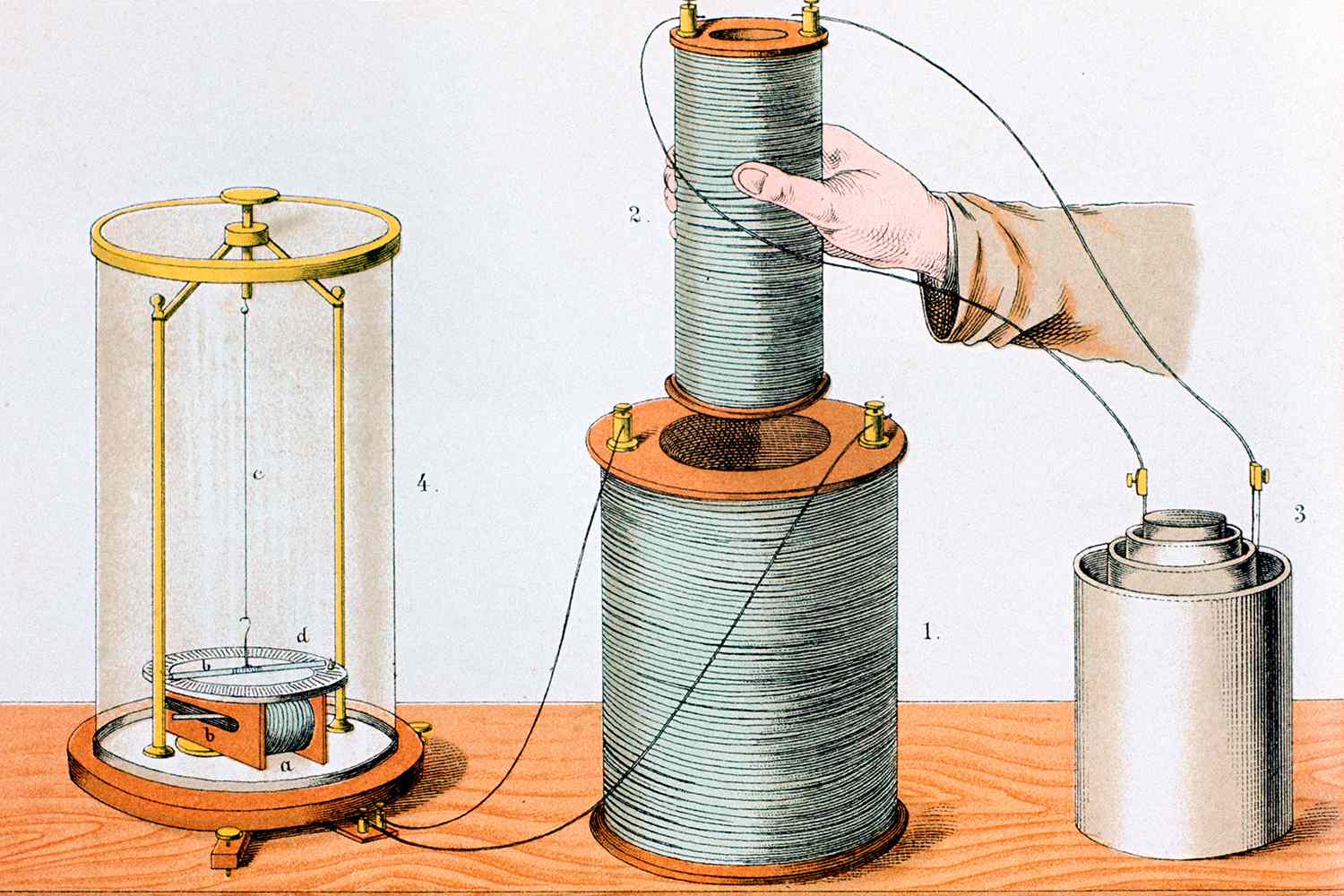
Faraday's law of electromagnetic induction is a fundamental concept in physics and engineering, revolutionizing the way we understand electricity and magnetism. This law, formulated by the brilliant scientist Michael Faraday in the 19th century, laid the groundwork for the development of electric power generation, transformers, and countless other technologies that have shaped the modern world. In this article, we will delve into 10 unbelievable facts about Faraday's law of electromagnetic induction, shedding light on its profound impact and unveiling intriguing insights that will leave you in awe of this remarkable scientific principle. So, fasten your seatbelts and get ready to embark on a captivating journey through the fascinating world of electromagnetic induction!
Key Takeaways:
- Faraday’s Law of Electromagnetic Induction, discovered by Michael Faraday, powers our technology and demonstrates the intimate connection between electricity and magnetism.
- Faraday’s Law sparked a revolution in electrical engineering, shaping the way we harness and utilize electrical energy, and continues to inspire scientists and innovators worldwide.
10 Unbelievable Facts About Faraday'S Law Of Electromagnetic Induction
Faraday's Law of Electromagnetic Induction is a fundamental principle in physics, revolutionizing our understanding of electricity and magnetism. Here are 10 unbelievable facts about Faraday's Law that will electrify your mind!
Faraday's Law is named after the English scientist Michael Faraday.
This groundbreaking law is a testament to Faraday's pioneering work in the field of electromagnetism. His discoveries laid the foundation for modern electrical technology and continue to shape our world today.
Faraday's Law describes how a changing magnetic field induces an electromotive force (EMF) in a conductor.
This phenomenon forms the basis of electromagnetic induction, a process crucial to the operation of electric generators, transformers, and various electrical devices. It's astonishing to think about how this simple principle powers so much of our technology.
The direction of the induced EMF is determined by Lenz's Law.
Lenz's Law, a vital companion to Faraday's discovery, states that the induced EMF always opposes the change in magnetic flux that produced it. This concept is mind-boggling yet essential to understanding the behavior of electromagnetic systems.
Faraday's Law is expressed by the equation: EMF = -d?/dt.
This concise equation encapsulates the relationship between the induced electromotive force (EMF) and the rate of change of magnetic flux (?) through a conducting loop. It's remarkable how a simple formula can encapsulate such a profound concept.
Faraday's Law has diverse real-world applications.
From power generation to wireless charging, Faraday's Law underpins a myriad of practical technologies that we rely on daily. The impact of this law is truly astounding, shaping the way we harness and utilize electrical energy.
Faraday's Law is a cornerstone of Maxwell's equations.
James Clerk Maxwell, a visionary physicist, incorporated Faraday's Law into his set of equations, unifying the theories of electricity and magnetism. This unification laid the groundwork for the development of modern electromagnetism and the concept of electromagnetic waves.
The discovery of Faraday's Law sparked a revolution in electrical engineering.
Faraday's groundbreaking revelation paved the way for the development of electric power systems, motors, and countless other innovations that have transformed the world. It's incredible to contemplate the far-reaching impact of this single scientific principle.
Faraday's Law demonstrates the intimate connection between electricity and magnetism.
This law beautifully illustrates the inseparable link between these two fundamental forces of nature. It's a testament to the elegant simplicity that underlies the complexities of the physical world.
Faraday's Law is a testament to the power of scientific curiosity and inquiry.
Faraday's relentless pursuit of knowledge and his insatiable curiosity led to the discovery of this fundamental law. His example serves as an inspiration for future generations of scientists and innovators.
Faraday's Law continues to captivate and inspire scientists and enthusiasts worldwide.
The enduring relevance and impact of Faraday's Law serve as a reminder of the profound influence of scientific discovery on our lives. It's truly remarkable how a principle elucidated in the 19th century continues to shape the technological landscape of the 21st century.
Faraday's Law of Electromagnetic Induction is a testament to the power of human intellect and the boundless potential of scientific exploration. Its impact reverberates through history and continues to shape the world around us.
Conclusion
In conclusion, Faraday's law of electromagnetic induction is a fascinating and fundamental principle that underpins the functioning of numerous electrical devices and systems. Understanding the relationship between magnetic fields and induced electromotive force is crucial in various applications, from power generation to the operation of electric motors and transformers. Faraday's law has revolutionized the way we harness and utilize electrical energy, paving the way for technological advancements that have shaped modern society. By delving into the intricacies of electromagnetic induction, we gain valuable insights into the interconnectedness of physics and engineering, ultimately driving innovation and progress in the realm of electrical science.
FAQs
What is Faraday's law of electromagnetic induction?Faraday's law of electromagnetic induction states that a change in magnetic field strength within a closed loop induces an electromotive force, resulting in the generation of an electric current within the loop. This phenomenon forms the basis of electric power generation and the operation of numerous electrical devices.
How does Faraday's law impact everyday technology?Faraday's law of electromagnetic induction is integral to the functioning of everyday technology, including generators, transformers, and electric motors. It enables the conversion of mechanical energy into electrical energy and vice versa, playing a pivotal role in power generation, industrial machinery, and various electronic devices.
Was this page helpful?
Our commitment to delivering trustworthy and engaging content is at the heart of what we do. Each fact on our site is contributed by real users like you, bringing a wealth of diverse insights and information. To ensure the highest standards of accuracy and reliability, our dedicated editors meticulously review each submission. This process guarantees that the facts we share are not only fascinating but also credible. Trust in our commitment to quality and authenticity as you explore and learn with us.
